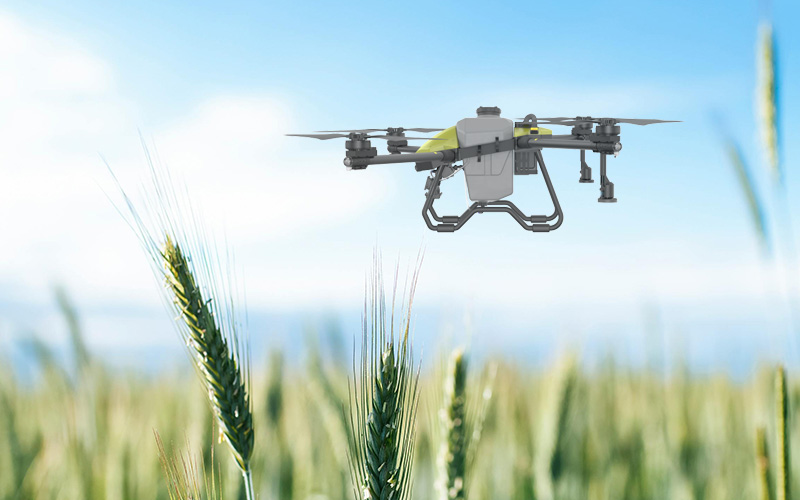By : TZX UAV
Click : 5400
The development trend of agricultural drones in the future is poised to be significant and multifaceted, driven by technological advancements, policy support, and evolving agricultural needs. Here are some key trends that are likely to shape the future of agricultural drones:
1. Technological Innovation and Advancements
Enhanced Autonomous Capabilities: Agricultural drones will continue to become more autonomous, with advanced sensors, AI, and machine learning algorithms enabling them to perform complex tasks with minimal human intervention.
Improved Payload and Endurance: Drones will have increased payload capacities and longer flight durations, allowing them to cover larger areas and carry heavier loads of pesticides, fertilizers, or seeds.
Integration of New Technologies: Technologies such as visual and radar systems, precision GPS, and real-time data analytics will be integrated into drones, enhancing their accuracy, reliability, and efficiency.

2. Market Expansion and Diversification
Global Reach: Agricultural drones will continue to expand their global footprint, with increased adoption in regions where traditional agriculture is prevalent and where there is a need for efficient and sustainable farming practices.
Diversified Applications: In addition to pesticide spraying and crop monitoring, drones will find new applications in areas such as precision agriculture, soil health assessment, irrigation management, and even livestock monitoring.
3. Policy and Regulatory Support
Favorable Policies: Governments around the world are likely to introduce more favorable policies to support the development and use of agricultural drones. This includes providing subsidies, tax incentives, and creating regulatory frameworks that facilitate the safe and effective use of drones in agriculture.
International Standards and Best Practices: As the use of drones in agriculture becomes more widespread, international standards and best practices will emerge to ensure safety, efficiency, and sustainability.
4. Sustainability and Environmental Benefits
Reduced Chemical Use: Agricultural drones will contribute to reduced chemical use through precision application, minimizing waste and protecting the environment.
Energy Efficiency: Advances in battery technology and propulsion systems will make drones more energy-efficient, reducing their carbon footprint.
Soil and Water Conservation: Drones will help monitor and manage soil and water resources, promoting sustainable farming practices.

5. Economic and Social Impact
Cost Savings: The increased efficiency and productivity of agricultural drones will lead to cost savings for farmers, improving their profitability and competitiveness.
Job Creation: The development and use of drones in agriculture will create new job opportunities in areas such as drone manufacturing, maintenance, and operation.
Rural Development: The adoption of drones in agriculture will contribute to rural development and economic growth, particularly in developing countries where agriculture is a key sector.
6. Challenges and Opportunities
Technical Challenges: The development of agricultural drones faces challenges such as battery life, payload capacity, and weather conditions. Overcoming these challenges will require ongoing research and development.
Regulatory Hurdles: While policy support is increasing, regulatory hurdles remain a challenge. Ensuring the safe and effective use of drones in agriculture will require a balance between innovation and regulation.
Talent Shortage: The growing demand for agricultural drones will lead to a shortage of skilled personnel in areas such as drone operation, maintenance, and data analysis. Addressing this shortage will require investments in education and training.
In conclusion, the future of agricultural drones is bright, with significant potential for growth and innovation. As technology advances and policies evolve, drones will play an increasingly important role in shaping the future of agriculture.
